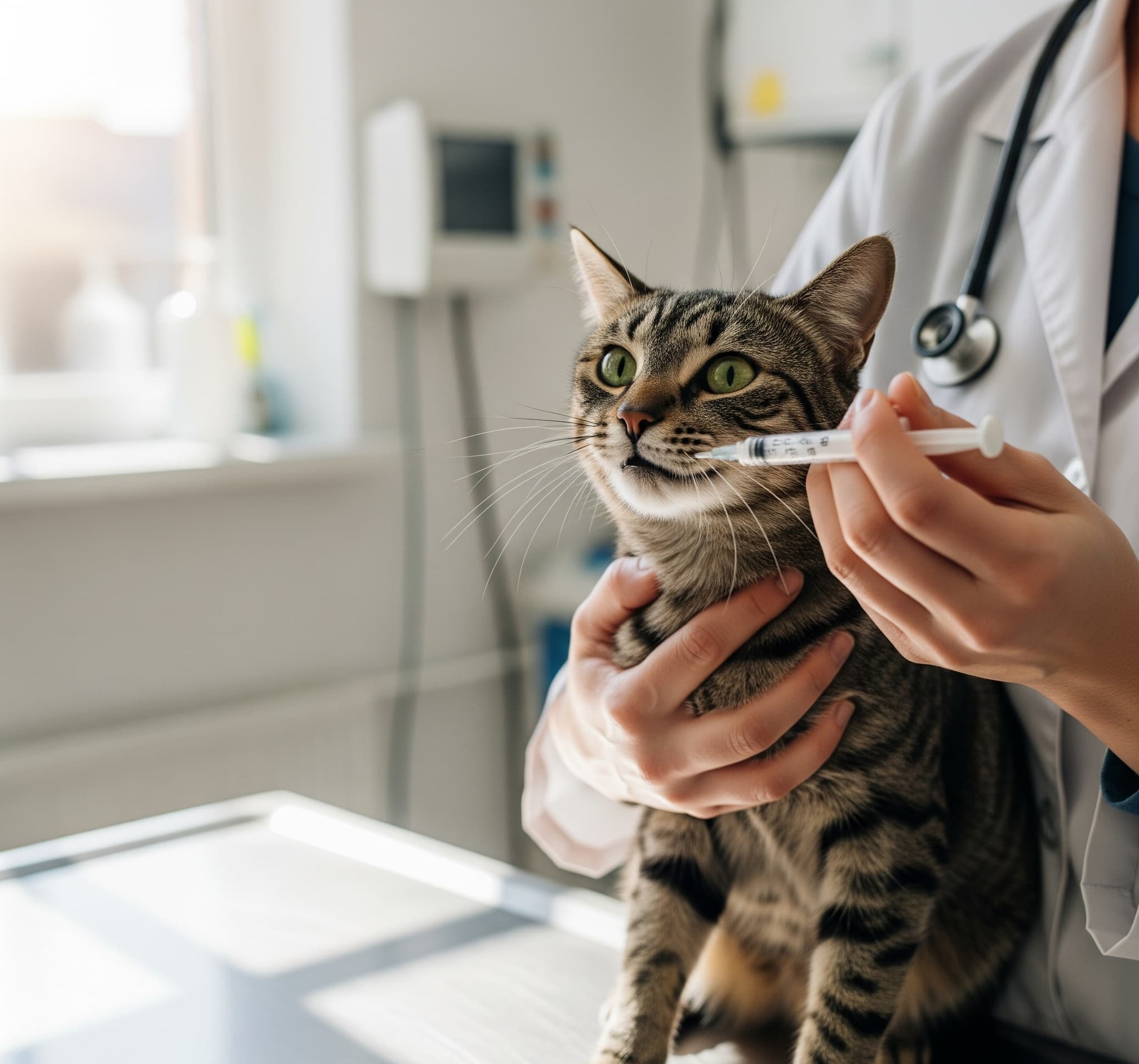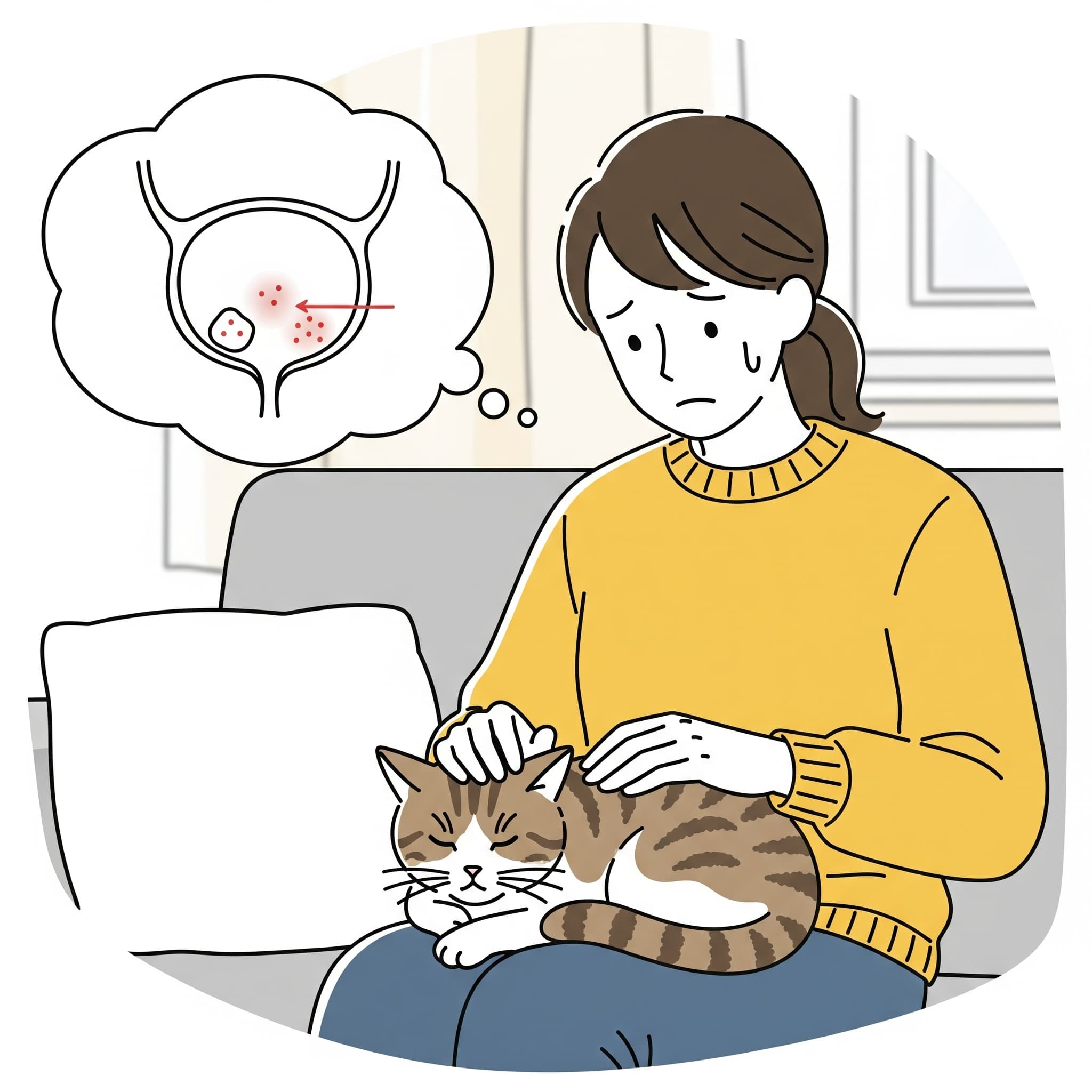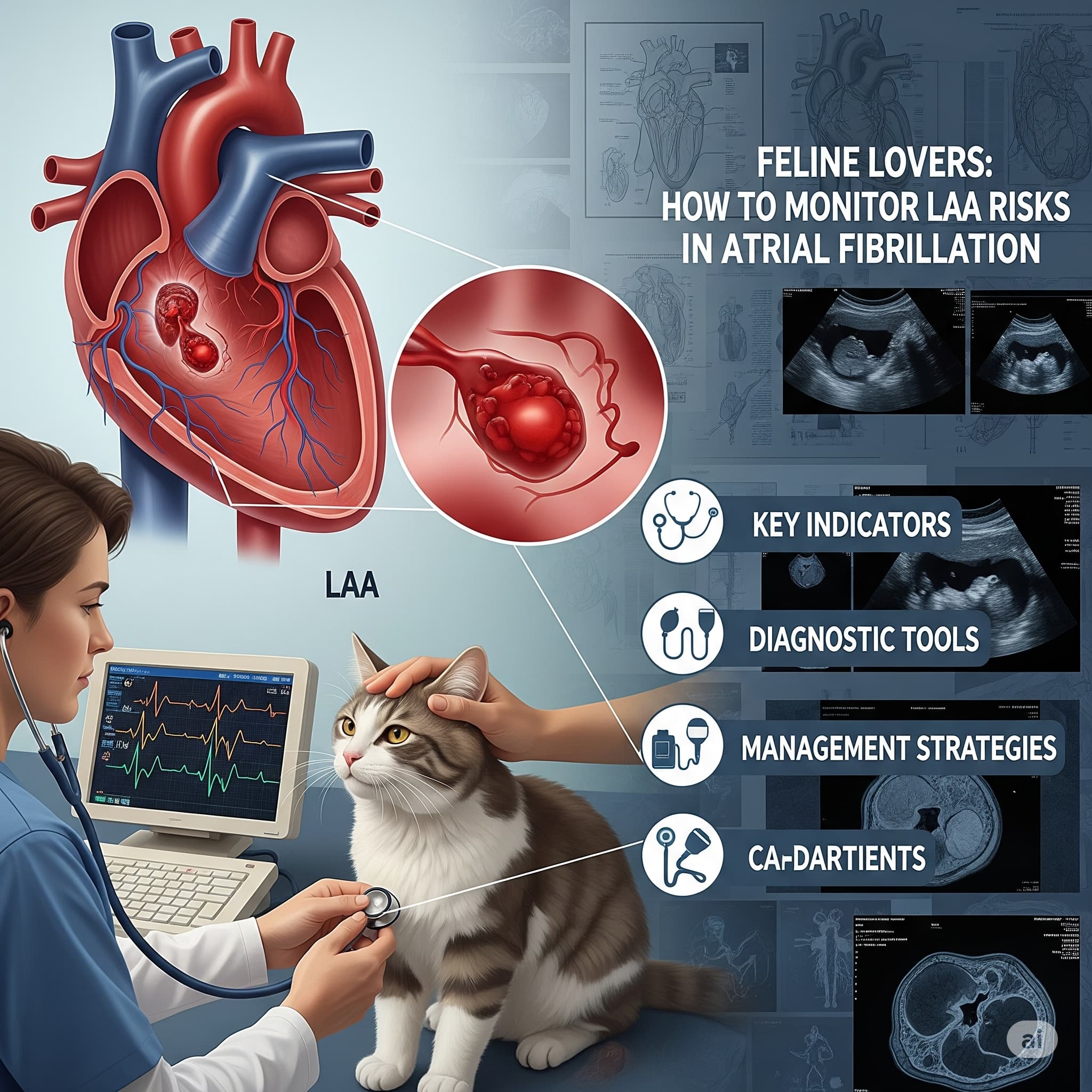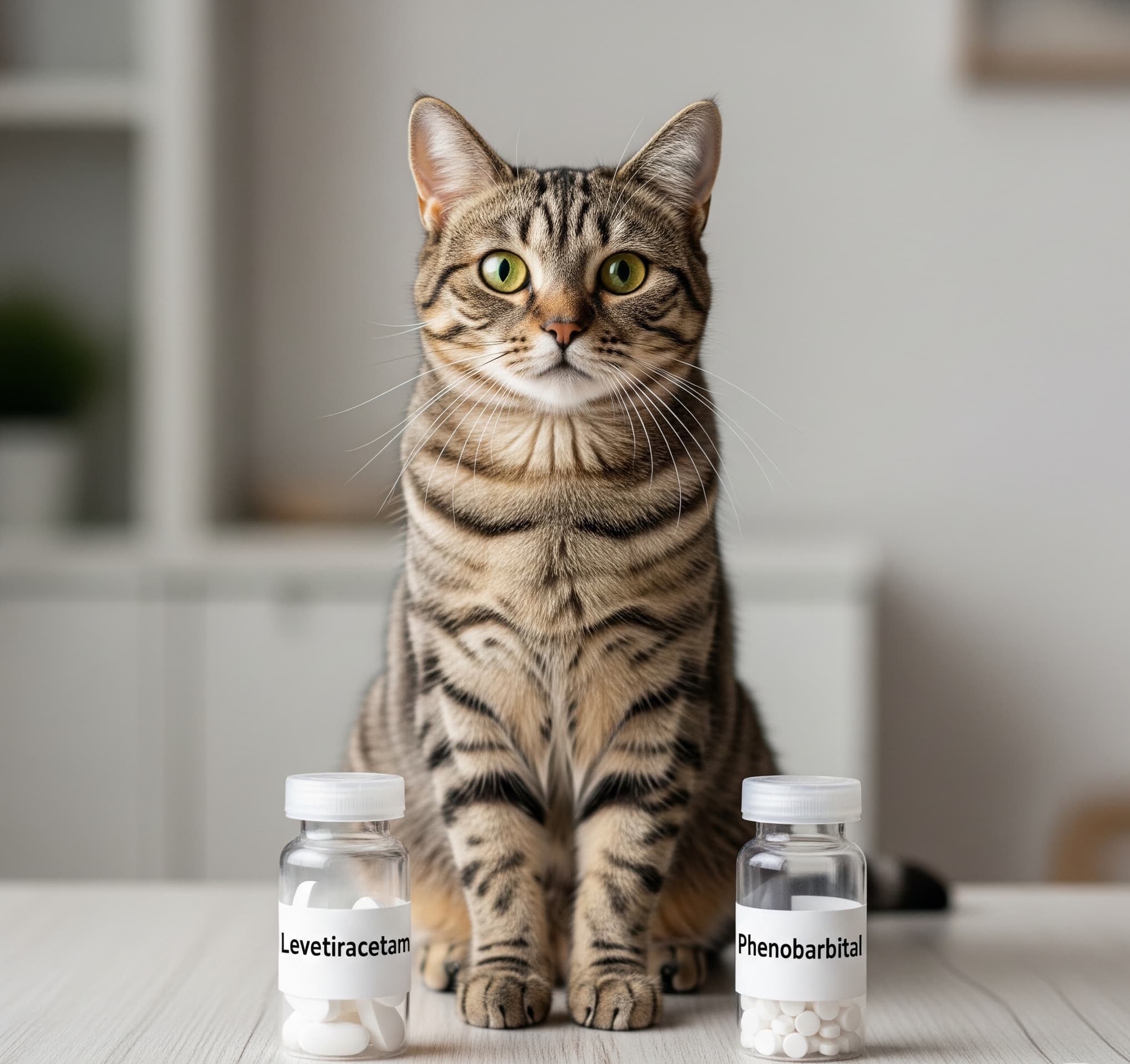Worried About Your Cat’s Seizures? Compare Levetiracetam and Phenobarbital
Learn more about how Levetiracetam and Phenobarbital work to manage epilepsy in cats. Examine their effectiveness, side effects, and cost. Read now to help your cat!
Introduction:
Getting an epilepsy diagnosis for your cat can be overwhelming, and you may be eagerly considering treatment options. It’s hard to see your beloved pet undergoing seizures. The silver lining is that medications like Levetiracetam and Phenobarbital are helping cats to lead happier, healthier, and seizure-free lives. But which one is more effective for your pet? We will explain how Levetiracetam and Phenobarbital compare to each other in managing feline epilepsy, focusing on the working mechanisms, side effects, and costs. It’s much like selecting the ideal gift for your cat—while all options are great, one may align better with your kitty’s preferences.
Here are the topics we will cover to assist you in making the right choice:
- Understanding Feline Epilepsy and Treatment Needs
- How Levetiracetam Works for Cat Seizures
- Phenobarbital’s Role In Controlling Feline Seizures
- Comparing Efficacy, Side Effects, and Costs
- FAQs to Answer Your Burning Questions
Without further ado, let’s take action for the sake of your cat’s well-being!
Understanding Feline Epilepsy and Treatment Needs
Epilepsy in cats is like an unanticipated tempest in the cat’s brain; it causes seizures that are a spectrum ranging from mild twitching to multi-muscle group convulsions. Hard to watch, isn’t it? The condition arises from an epilepsy syndrome, which can stem from genetics, a causal head injury, or remain idiopathic. The adjustments focus on minimizing the assaults’ frequency and severity. It is common for veterinarians to use Levetiracetam and Phenobarbital. These medications are like a soothing, calming breeze that can help settle brain storms in a cat’s head.
But here’s the deal: not every cat is treated the same way. Some need gentler drugs, and some need heavy hitters. Levetiracetam and Phenobarbital can’t be used interchangeably, and with some, they both need to be considered. Levetiracetam is prescribed if the cat is more relaxed, and phenobarbital is given if the cat is more active.
How Levetiracetam Works for Cat Seizures
Oftentimes, cat epilepsy is treated with levetiracetam, often sold as keppa. Levetiracetam is classified as an anticonvulsant that calms and organizes brain overactivity. Think about Levetiracetam as a dimmer switch, which reduces electrical surges.
Levetiracetam is easier to administer and is gentler on the body. Doing so with older drugs does tend to have more harmful effects. More harmful put put less cats to sleep, and be less active. Levetiracetam is more difficult for cats with lung problems and does tend to be more common on pets in dual medicated spots.
One catch? Giving it 2-3 doses a day? That’s like riding a rodeo from hell if your pet is a pill fiend. However, her liquid form makes easing her dosage much kinder, especially if they are sensitive “felines.”
Phenobarbital’s Role In Controlling Feline Seizures
Most vet’s go to medicine Levetiracetam, unlike other prescriptions; she is well known for one thing, when it is needed, it is granted. Mostly prescribed phenobarbital, a seizure medicine she uses to calm feline hyperactivity, treats cats by slowing motor functioning much like a well needed cozy blanket easing off a kitty’s wild electrical peaks. Epileptic cats often gain a 50% reduction in wild motor activity.
Chronic and easily disrupted felines that are often prescribed one to two daily doses which is much kinder than Levetiracetam’s intake schedule. Though, like a well known veteran, she comes with a side of let down due to her offering unwelcomed sluggishness, thirst, and increased appetite along with other hunger side effects. Depending on the cat, special diets are needed to avoid these symptoms and a well guarded liver would require regular blood work due to Phenobarbital’s processing quirks.
Ever thought about how taking care of a cat looks like for a long time? Well, it would resemble a systems of daily routines like a daily interaction with a cat feather toy that would require a frequent vet check ups.
Comparing Efficacy, Side Effects, and Costs
Let’s compare Levetiracetam and Phenobarbital. I would compare it to a new sleek cat tree to an old trustworthy scratching post. Both of them serve a purpose but in different styles.
Let us break it down:
Both medications have good efficacy. However, studies suggest that Phenobarbital is slightly more effective for frequent seizure control with 80% of cats achieving good control. Levetiracetam is especially effective in cats with milder forms of epilepsy or those that require longer treatment. In case the cat has difficult to control seizures, veterinarians often use both medications in combination.
Phenobarbital is more effective than Levetiracetam. Its Side Effects of Phenobarbital include cat sedation, weight gain, and liver stress. However, Levetiracetam is the gentler option with side effects of mild lethargy. If the patient is an older cat with other health issues, using Levetiracetam is often the safer option.
Cost and Convenience: The price of Phenobarbital is a lot more affordable, costing around $10 – $30 a month depending on dosage. Levetiracetam is more expensive, running $20 – $50 a month, and has a more complicated dosing schedule making it a hassle for busy pet owners.
Long-Term Use: Moderately treating Phenobarbital requires liver monitoring, while Levetiracetam is gentler on the organs but is more demanding and requires a schedule and strict adherence to timing. Your vet is invaluable in this situation. It’s like having the right strategy for choosing a dish for your fussy feline.
Which one is better? Your cat’s specific requirements, your financial constraints, and how much attention you are willing to give to dosing determine the answer. The vet is the best person to discuss your cat’s seizure activity, general health, and other holistic concerns.
FAQs to Answer Your Burning Questions
How soon will the meds start working?
Both Levetiracetam and Phenobarbital can reduce seizure activity within days; however, it may take a while to hone in on the right dose. It’s a process that requires patience, much like training your cat to use a new litter box. Your vet will take it from there and will revise it as necessary based on your cat’s responses.
Are there natural alternatives to these drugs?
Some pet parents consider diets or supplements such as CBD, but their effectiveness pales in comparison to Levetiracetam and Phenobarbital. Always consult a vet first. After all, no one wants to compromise a cat’s wellbeing.
Can my cat live a normal life with epilepsy?
Absolutely! Many cats, including those with epilepsy, can live a long life when treated appropriately. Think of it like a quirky “disorder” that one manages—after the right adjustment, the cat can still chase laser pointers and snooze in sunbeams.
What if the meds don’t work?
If the cat undertakes in additional seizures, your vet can consider changing the dose, combining it with other meds, or even trying other medications such as zonisamide. It may feel like a long road ahead, but with your vet’s guidance, things will work out.
Conclusion:
Although it seems like a hard dilemma to face, deciding between Levetiracetam and Phenobarbital as their first line treatment of your cat’s epilepsy is one of the best decisions to make. It’s commendable that you’re trying to gain more knowledge. While both meds have their merits, Phenobarbital is more cost-effective and provides good value. Levetiracetam is better for sensitive cats. Working with your vet to balance effectiveness, side effects, and costs will set you up to find the right treatment for your cat.
Concerned about your cat having seizures? Talk to your veterinarian about Levetiracetam or Phenobarbital so your cat can be playful again. Would you like to ask a question or share a story about your cat? You can leave a comment below or subscribe to our newsletter to receive more pet health tips.




Post Comment